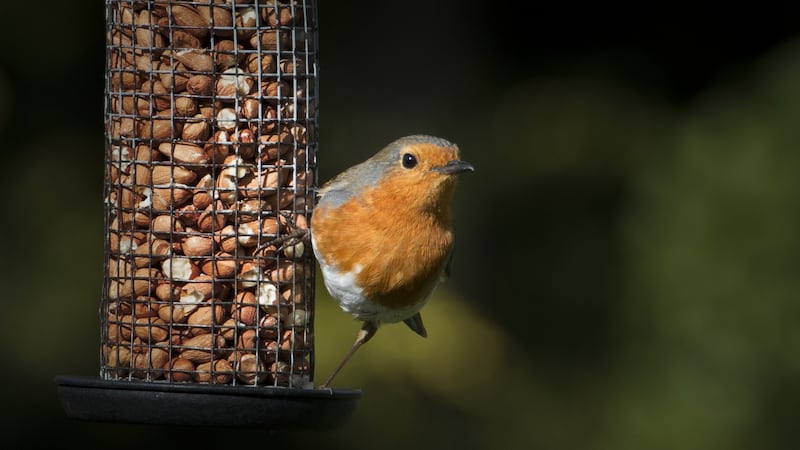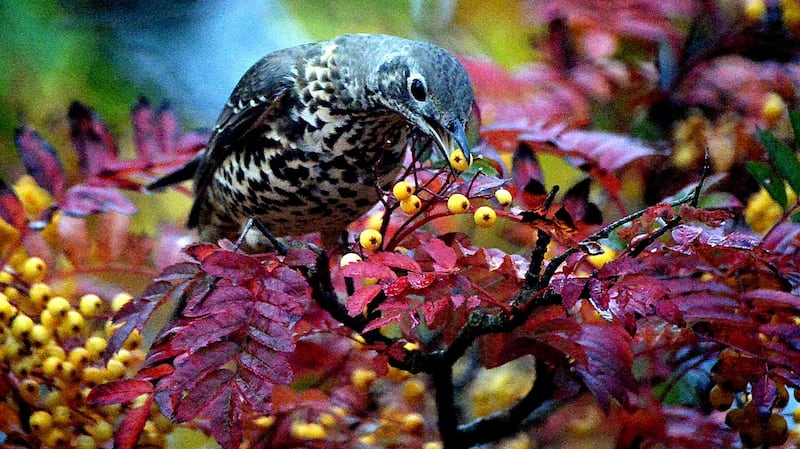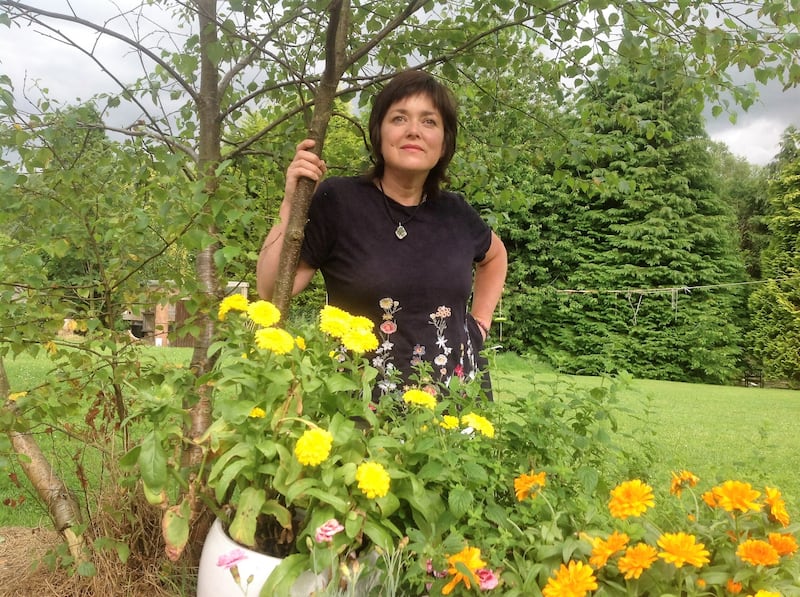It’s at this time of year, when frosts silver the trees and the garden slumbers, that I become a birdwatcher. Not the sort that requires sturdy waterproofs, thermal gloves and a hot flask of coffee, I should add, but rather the armchair kind, where you’re a silent spectator in a world of flickering wings, birdsong and noisy chatter interrupted only by the occasional, furious but short-lived avian squabble.
Not that I mind those noisy squabbles. A lifetime’s gardening has taught me that even the tiniest balcony garden is hugely enriched by the wild birds that visit, so much so that now I try to look at the world through their eyes.
It’s taught me to leave decaying seed heads in place to provide a valuable source of winter food, rather than rushing to deadhead. To prize the garden’s self-sown teasels not only for their lofty, sculptural flowers but also because of the colourful flocks of goldfinches they’ll attract. To take a special pleasure in watching sparrows feeding on the seed heads of perennial weeds such as wild dock, thistles and dandelions and the clouds of blackbirds that descend on the garden’s crops of blackcurrants, raspberries and windfallen apples.
And to marvel at the thrushes that somehow always know when the rowan tree’s scarlet berries are at that perfect point of delicious ripeness. All are small but precious signs that things are right with our world.
Similarly, a lifetime’s gardening has also taught me that a bird-friendly garden is one in which environmentally harmful chemicals have no place. Stop using weedkillers, insecticides, artificial fertilisers and fungicides and you’ll very quickly notice an increase in the variety and number of birds that visit. Especially if you can provide them with leafy shelter/cover, a source of clean drinking/bathing water (something as simple as a wide, shallow dish) and a suitable place to nest and/or perch.
Just one small garden tree – ideally a fruiting/berrying kind – a hedge, shrubs and/or wall climbers will all provide excellent habitats. A natural lawn will also offer plenty of food in the shape of earthworms, insect eggs and larvae.
Some birds will come to feed on your garden’s slugs, snails, caterpillars and aphids (and even its rodents), providing a free, supremely nature-friendly alternative to those same costly, poisonous garden chemicals. Others will feed on its fruit, berries and seeds, including the oil-rich seeds of many common weeds. And of course, if you provide them with a variety of well-stocked bird feeders (for perching birds such as finches and tits) plus a bird table (for ground-feeding species such as robins, thrushes, blackbirds), they’ll be very appreciative.
For the perfect garden bird cafe, situate your bird table and feeders in a spot close to high, leafy cover (this makes them feel safer) but at least two metres from low ground cover so they can’t be easily ambushed by predatory cats. Where possible, regularly changing its location in the garden will also help to avoid disease. For the same reason, whether it’s free-standing, wall-mounted or hung from a chain, the ideal bird table will have an overhanging roof to help keep food dry. As for birdfeeders, these come in a range of designs specifically suitable for different types of feed.
Whole peanuts, for example, should always be supplied in a steel wire mesh feeder to prevent young birds from choking on them. Nyjer feeders (plastic tubes designed with a number of special feeding ports/perches along their length) are designed for the tiny black nyjer seed especially loved by goldfinches, siskins and redpolls while hopper-type feeders with flat trays are suitable for cereal or seed-based mixes. There are even feeders that can be fixed via suction caps to windows, a wonderful way for apartment dwellers (and convalescents) to enjoy the magic of birdwatching up close.

Fat balls (always remove the plastic netting), suet bars and coconut husks filled with bird-friendly, salt-free “peanut butter” (but not the kind intended for human consumption, which is far too salty) can also be hung from bird tables, branches or wall brackets and are excellent high-energy, calorie-rich foods that help garden birds survive cold spells of winter weather. Sunflower hearts, black sunflower seeds, mealworms, pre-soaked sultanas, sliced apple, naked rolled oats and pinhead oats sprinkled thinly on a bird table will also be greatly appreciated by a wide variety of birds including robins, blackbirds, thrushes, chaffinches, wrens, starlings and dunnocks.
Avoid putting out very salty, stodgy or highly processed foods, while even bread should only ever be given in very small quantities as it’s of little nutritional value.

Whichever food you choose, make sure it’s carefully stored and of good quality. Peanuts, for example, can vary hugely in terms of their nutritional content. Some contain so little oil that garden birds won’t bother eating them while if improperly stored in warm, humid conditions, they can easily become contaminated with aflatoxin, a poisonous mould fatal to birds when consumed.
For this same reason, uneaten peanuts should never left out in mild, damp weather for longer than a week. Likewise, don’t put out large quantities of food at any one time. Instead, regularly replenish supplies and remove any stale loose food from the ground to prevent disease and avoid attracting rodents. Last, but certainly not least, it’s crucial to regularly clean and disinfect feeders to keep your garden’s avian visitors happy and healthy.
To discover more about the many different species of resident and migratory birds that visit Irish gardens, visit the website of Birdwatch Ireland whose online shop is also a great place to source all kinds of birdwatching accessories from birdfeeders to binoculars. Many keen birdwatchers also enjoy taking part in its annual Irish Garden Bird Survey, which runs from December 1st to the last week in February (birdwatchireland.ie).
This Week in the Garden
Bring the garden indoors by "forcing" specially treated winter-flowering bulbs into early bloom: hippeastrum (amaryllis), sweetly scented paperwhites (narcissus) and hyacinths can all be planted in the coming weeks and grown on undercover to produce sweetly-scented flowers in a matter of months. Suppliers include all good Irish garden centres as well as specialist online suppliers such as sarahraven.com
November is the best month to plant tulip bulbs as cooler temperatures help reduce the risk of tulip fire (Botrytis tulipferae), the very destructive fungal disease carried by infected bulbs that can remain in garden soil for several years to infect new plantings. For this reason, always use large, good quality bulbs, discard any that show signs of disease or blemishes (mould growth, black spots, bruises) and do your best to rotate plantings.
For best results, plant tulip bulbs deeply into fertile, free draining soil in full sun or light shade. Recommended suppliers include all good Irish garden centres , Mr Middleton (mrmiddleton.com) and for certified-organic bulbs, Fruithill Farm (fruithillfarm.com).
Do this

Well known for her passion for “edimentals” (multipurpose plants that are ornamental and edible) as well as her interest in permaculture and forest gardening, the Wicklow-based organic gardener Orlaith Murphy’s small town garden in Newtownmountkennedy, Co Wicklow provides her family with an impressive range of delicious, nutritious, homegrown edibles while also serving as a decorative outdoor space.
If you love the thought of sweet cicely schnapps, roast dahlia tubers and rose petal syrup (yum), then don’t miss her lecture Petal Power next Saturday (November 16th, 2.30pm-4pm) at the National Botanic Gardens in Glasnevin.
Dates for your diary
Wednesday, November 13th (8pm). Kill O'The Grange Parish Centre, Kill Lane, Dún Laoghaire, Co Dublin, Roses Revealed, a talk by author and broadcaster Dermot O'Neill on behalf of the South County Dublin Horticultural Society, admission €5. Also on November 13th (12pm-1pm), National Botanic Gardens, Glasnevin, Dublin 9, a talk on climate change and its effects on plant evolution and ecology by Prof Jennifer McElwain, chairwoman of botany at Trinity College Dublin, organised with Teagasc as part of National Science Week, admission free, see botanicgardens.ie




















